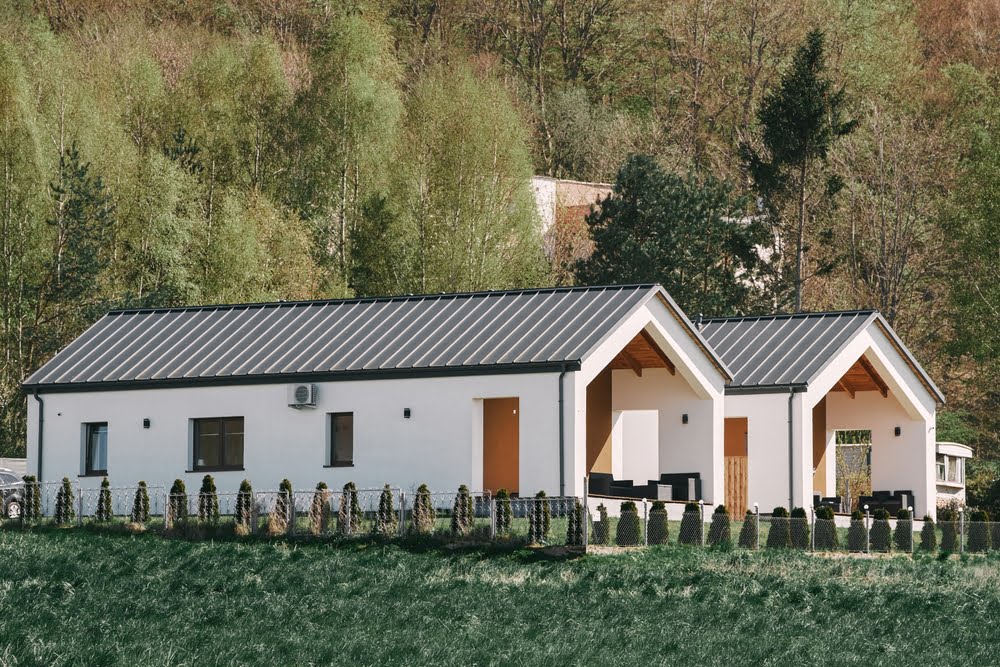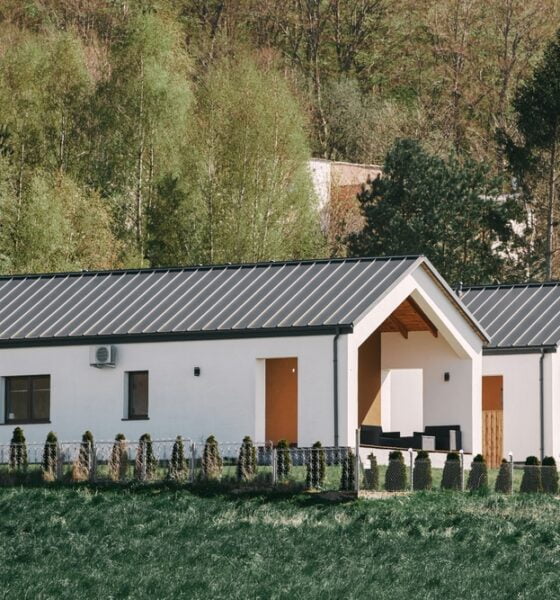

Features
Eco-Friendly Barn Upgrades: Balancing Sustainability And Function
With escalating environmental consciousness, sustainable practices have become a cornerstone of architectural design and renovation. Among the different structures requiring green upgrades, barns demand particular attention due to their multifunctional use and considerable environmental footprint.
By implementing eco-friendly upgrades, owners contribute to environmental preservation and achieve economic efficiency and improved functionality. The balance between sustainability and function creates a win-win scenario that empowers barn owners and aids in the fight against climate change.
This article explores seven innovative barn enhancements, intricately weaving together the principles of environmental sustainability and practical functionality.
1. Reclaimed Barn Wood Siding
Barn wood is an excellent material for those seeking an eco-friendly upgrade. Opting for reclaimed barn wood siding, in particular, presents a golden opportunity to give a barn new life.
By recycling old barn wood, not only does one prevent the unnecessary cutting of trees, but they also reduce waste destined for landfills. This practice falls under the broader concept of circular economy, fostering resource efficiency and minimizing environmental impact.
Apart from being environmentally friendly, reclaimed barn wood has a certain rustic charm that new materials cannot match. The wood develops a distinct patina with age, and old nail holes or saw marks can add unique character to your barn.
You can ensure great durability and character by using reclaimed barn wood siding on your next project.
2. Solar Panels
Installing solar panels is a significant stride towards creating an energy-efficient barn. Harnessing solar power reduces reliance on conventional energy sources, thereby minimizing the barn’s carbon footprint. They can supply power for lighting, water heaters, electric fences, and other barn utilities, making them an effective renewable energy solution.
Despite the initial installation cost, the long-term benefits of solar panels are undeniable. They lower energy bills and provide a degree of energy independence. In many regions, excess solar power can be sold back to the grid, generating an additional income stream.
By incorporating solar energy, a barn becomes a sustainable power hub, representing a perfect blend of functionality and environmental responsibility.
3. Rainwater Harvesting Systems
Implementing a rainwater harvesting system is another way to optimize barn sustainability. These systems collect and store rainwater for later use, such as for irrigation, cleaning, or livestock watering. By utilizing a resource that would otherwise go to waste, barn owners can decrease their dependence on municipally supplied water, conserving this precious resource.
A well-designed rainwater harvesting system contributes to water conservation and reduces run-off, mitigating soil erosion around the barn. By controlling water outflow, barn owners can prevent flooding and damage to the surrounding landscape. Therefore, installing such a system promotes both environmental sustainability and functional efficiency in barn management.
4. Insulation
Proper insulation is a critical aspect of any eco-friendly barn upgrade. Insulation regulates the barn’s internal temperature, reducing the need for artificial heating or cooling. By maintaining a steady temperature, owners ensure the well-being of livestock and the quality of stored goods, promoting overall efficiency.
Insulation can be achieved with environmentally friendly materials like sheep’s wool, recycled denim, or cellulose. Besides being sustainable, these insulation options are usually safer, emitting fewer toxic chemicals than traditional insulation materials.
An insulated barn, therefore, not only saves on energy costs but also enhances indoor air quality, safeguarding the health of its inhabitants.
5. Natural Lighting
Maximizing natural lighting is an effective strategy for reducing energy consumption in barns. This can be achieved through architectural elements like large windows, skylights, or light-reflective surfaces. These features allow more sunlight to enter the barn, minimizing the need for artificial lighting during the day.
Beyond energy savings, natural lighting improves the barn’s interior atmosphere. Studies show that exposure to natural light can boost mood and productivity, which can benefit people working in the barn. Additionally, natural lighting can positively affect livestock health and productivity, marking it as a key component in any eco-friendly barn upgrade.
6. Composting
Establishing a composting system can be an excellent way to manage waste from barns, particularly those housing livestock. Composting transforms organic waste into a nutrient-rich soil conditioner, providing an eco-friendly way to dispose of manure and other barn waste.
Beyond waste management, composting creates a resource that can improve soil health in gardens and fields, promoting better crop yields. Furthermore, it reduces the methane emissions that would be generated if the waste were left to decompose in a landfill. This makes composting a practical solution, contributing to barn functionality and environmental sustainability.
7. Eco-Friendly Paints
Choosing eco-friendly paints for barn refurbishments is another significant upgrade that can help balance sustainability and function. Traditional paints often contain Volatile Organic Compounds (VOCs), which can harm the environment and inhabitants’ health. Eco-friendly paints, on the other hand, contain fewer harmful chemicals, making them a safer choice.
These paints come in a wide range of colors and finishes, so there’s no need to compromise on aesthetic appeal when opting for a greener alternative. By choosing eco-friendly paints, barn owners can create a healthier environment for both humans and livestock while reducing their barns’ overall environmental impact.
Conclusion
Barn owners have a myriad of eco-friendly upgrade options at their disposal, all of which balance sustainability with function. The opportunities to improve barn efficiency while minimizing environmental impact are abundant.
It is a journey that yields financial benefits and significantly contributes to the fight against climate change. By integrating these green practices, the barn, a symbol of agricultural tradition, can become a beacon of sustainable innovation.


 Environment9 months ago
Environment9 months agoAre Polymer Banknotes: an Eco-Friendly Trend or a Groundswell?

 Environment11 months ago
Environment11 months agoEco-Friendly Home Improvements: Top 7 Upgrades for 2025

 Features8 months ago
Features8 months agoEco-Friendly Cryptocurrencies: Sustainable Investment Choices

 Features10 months ago
Features10 months agoEco-Friendly Crypto Traders Must Find the Right Exchange

















